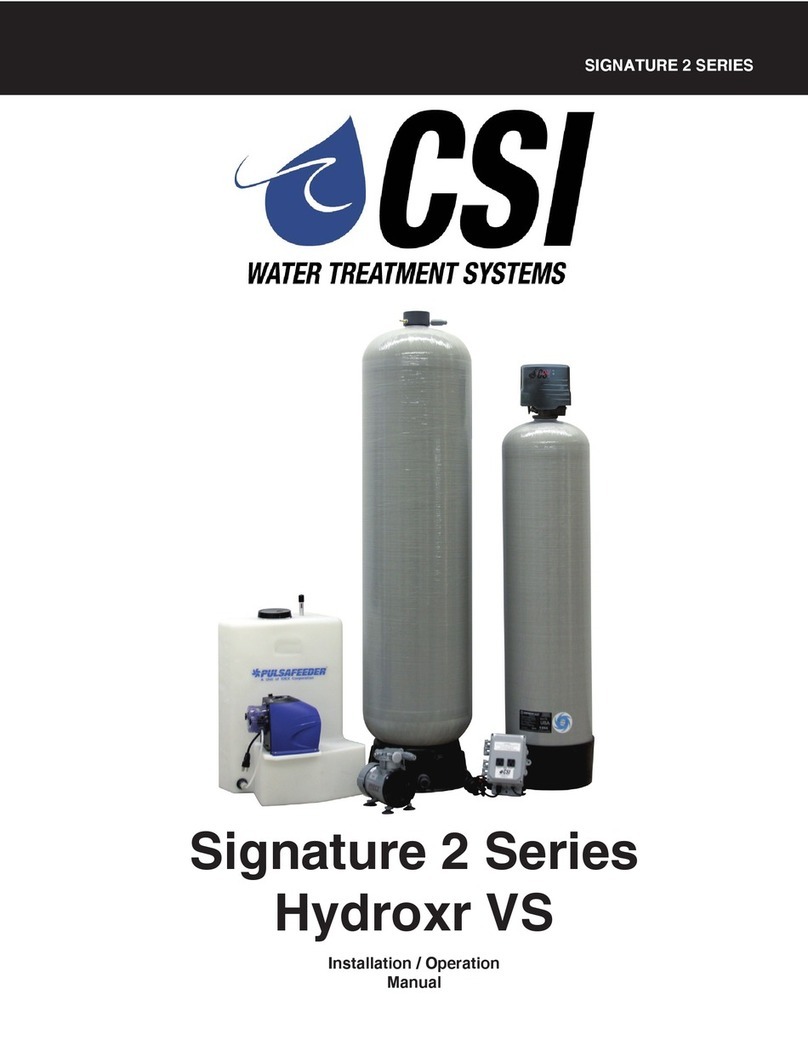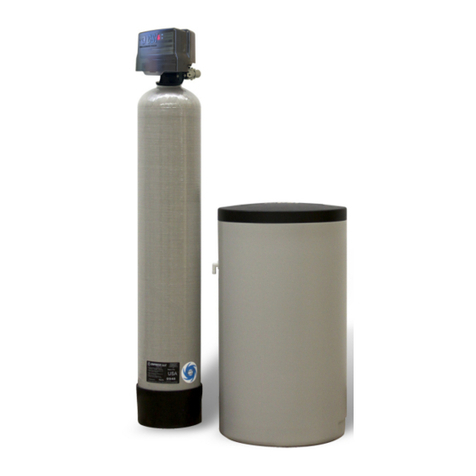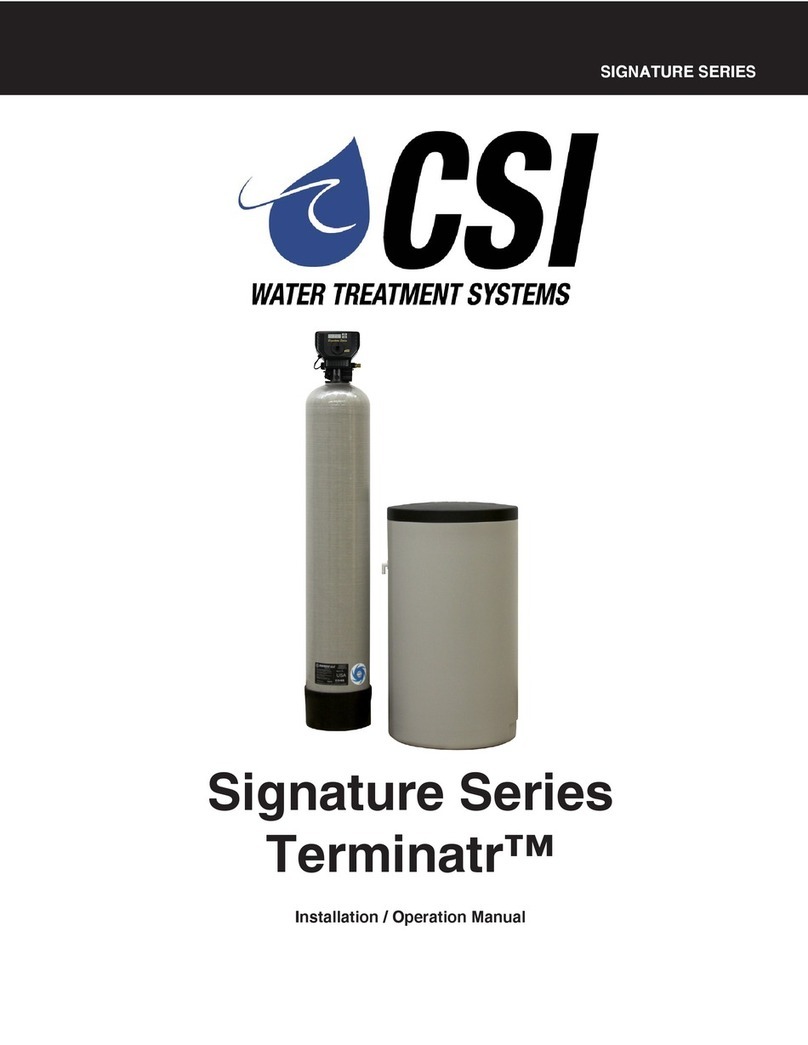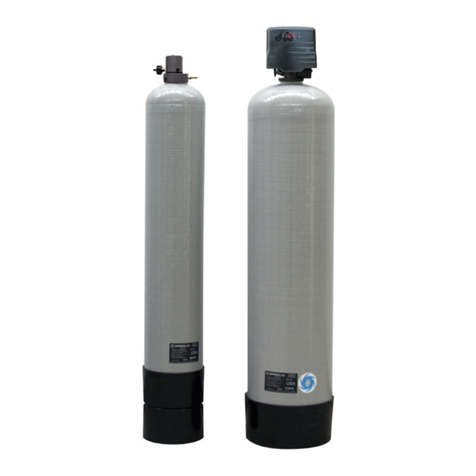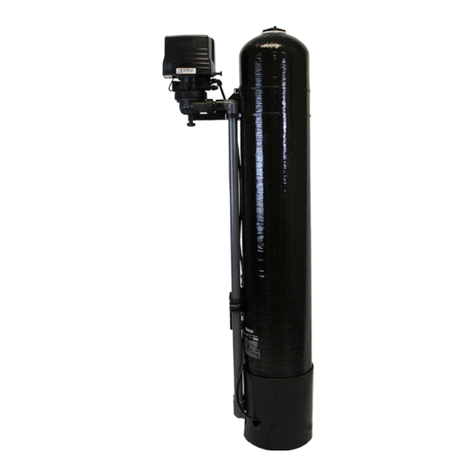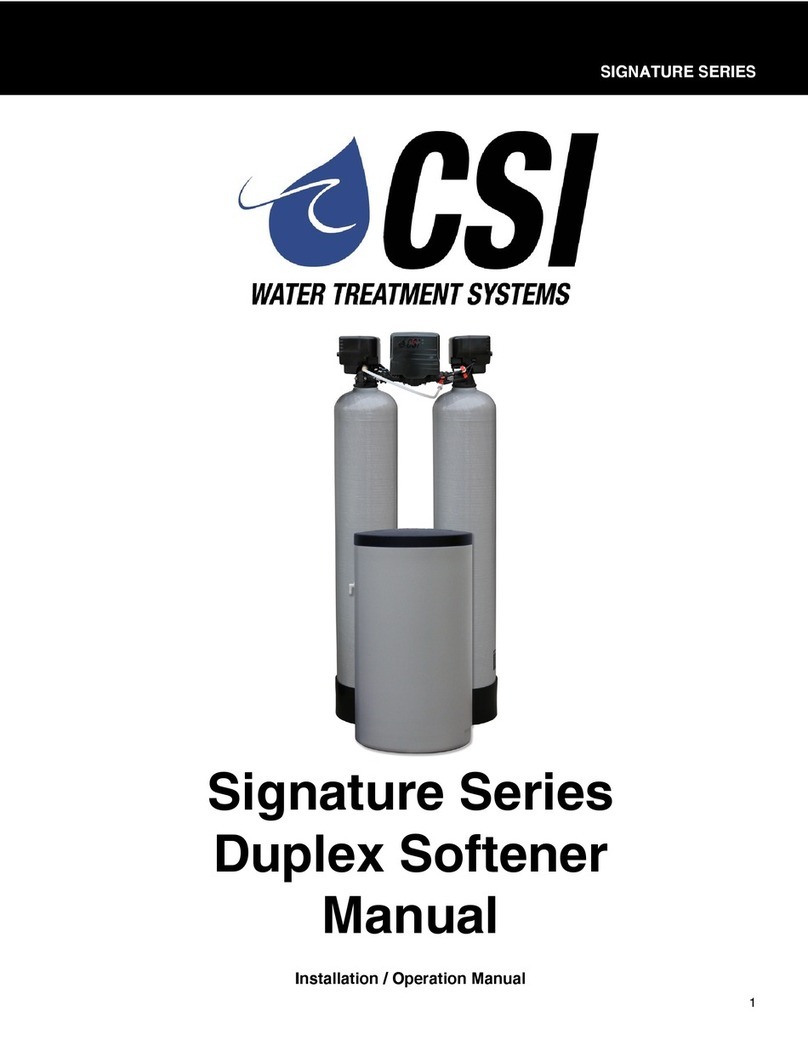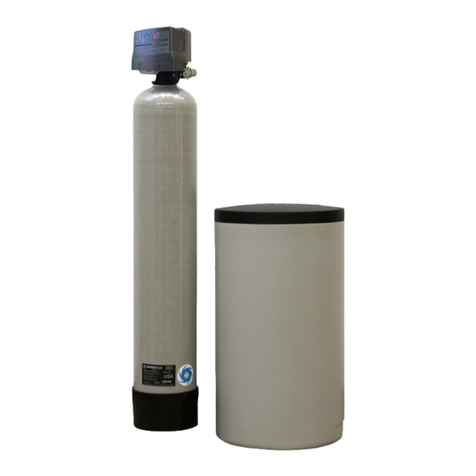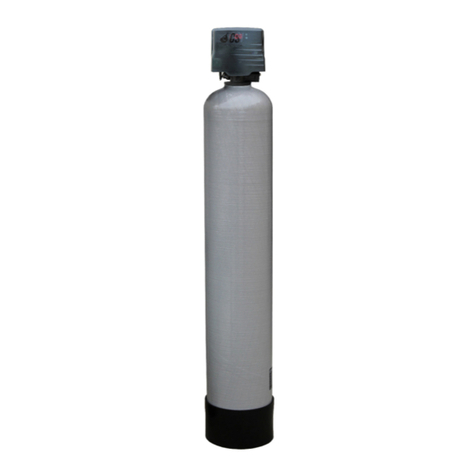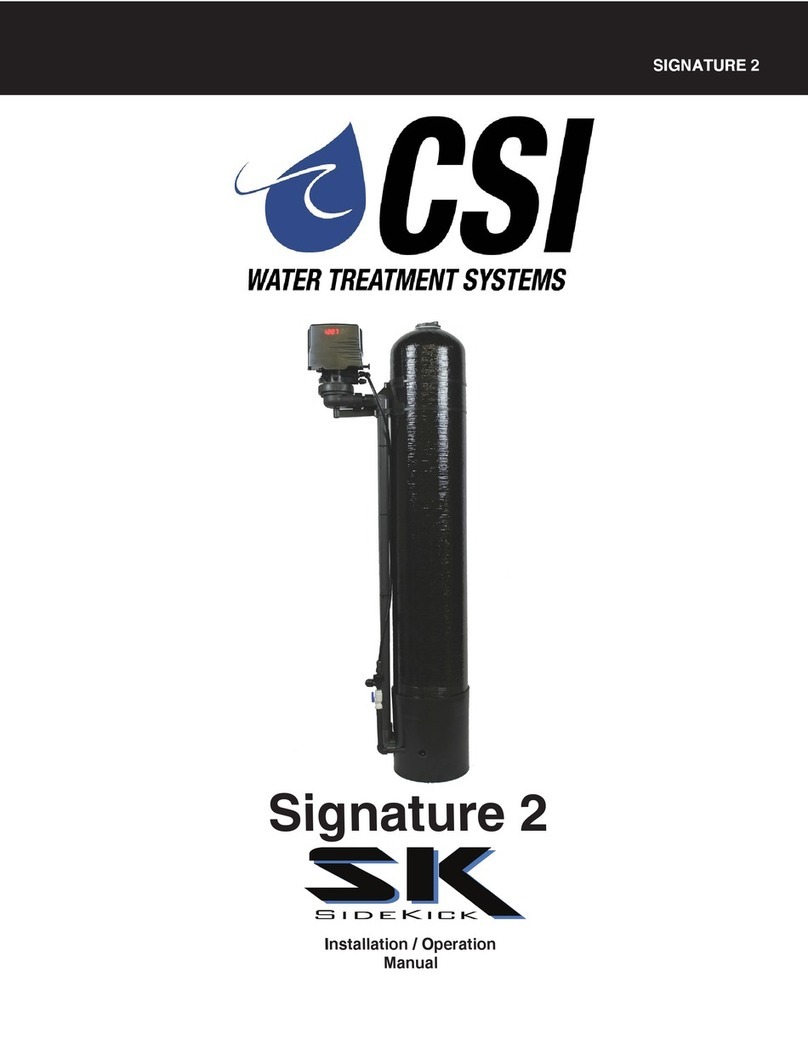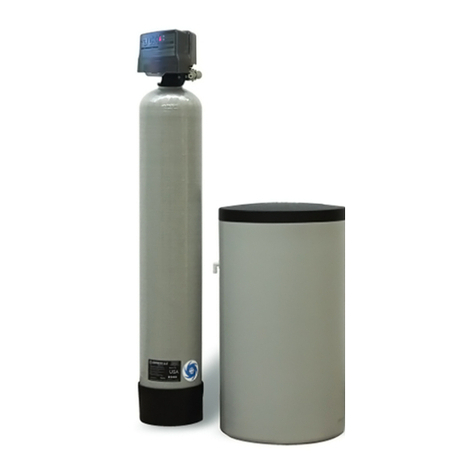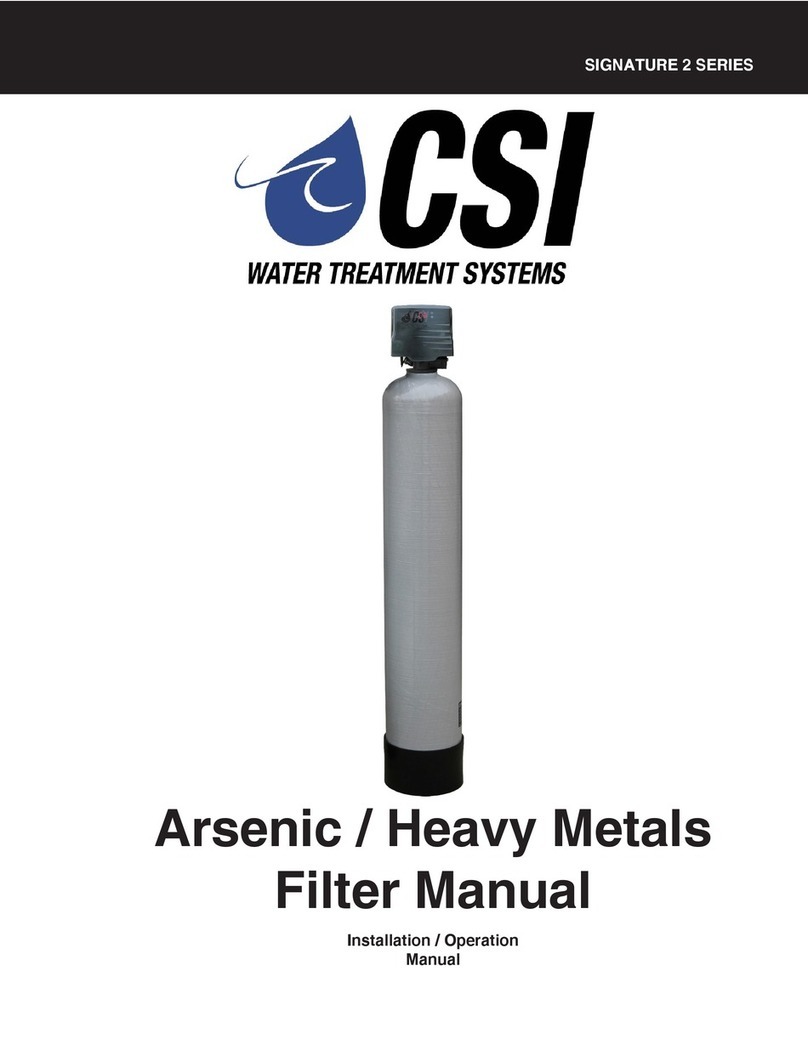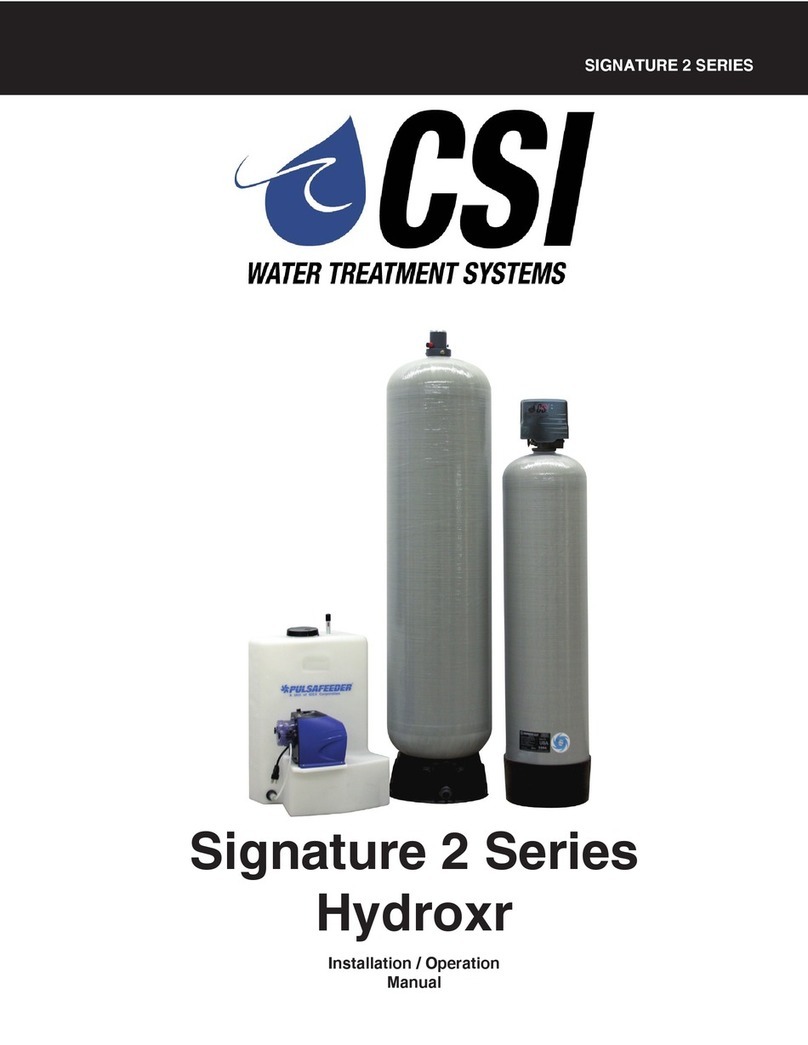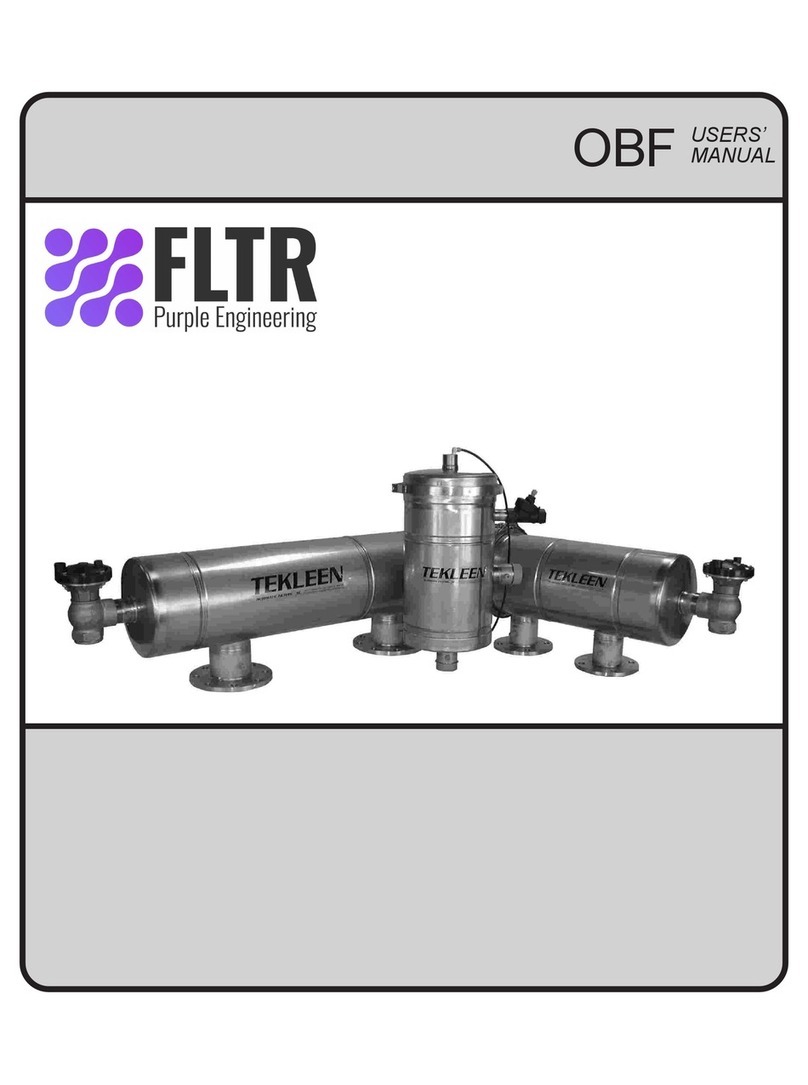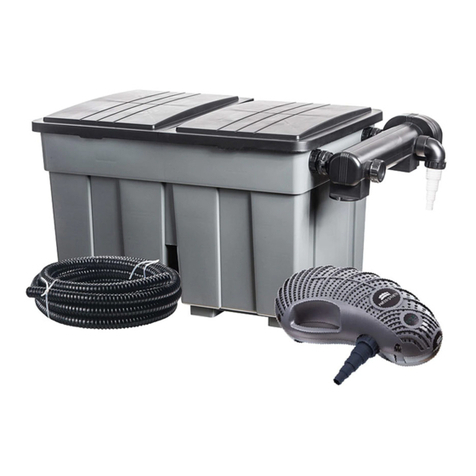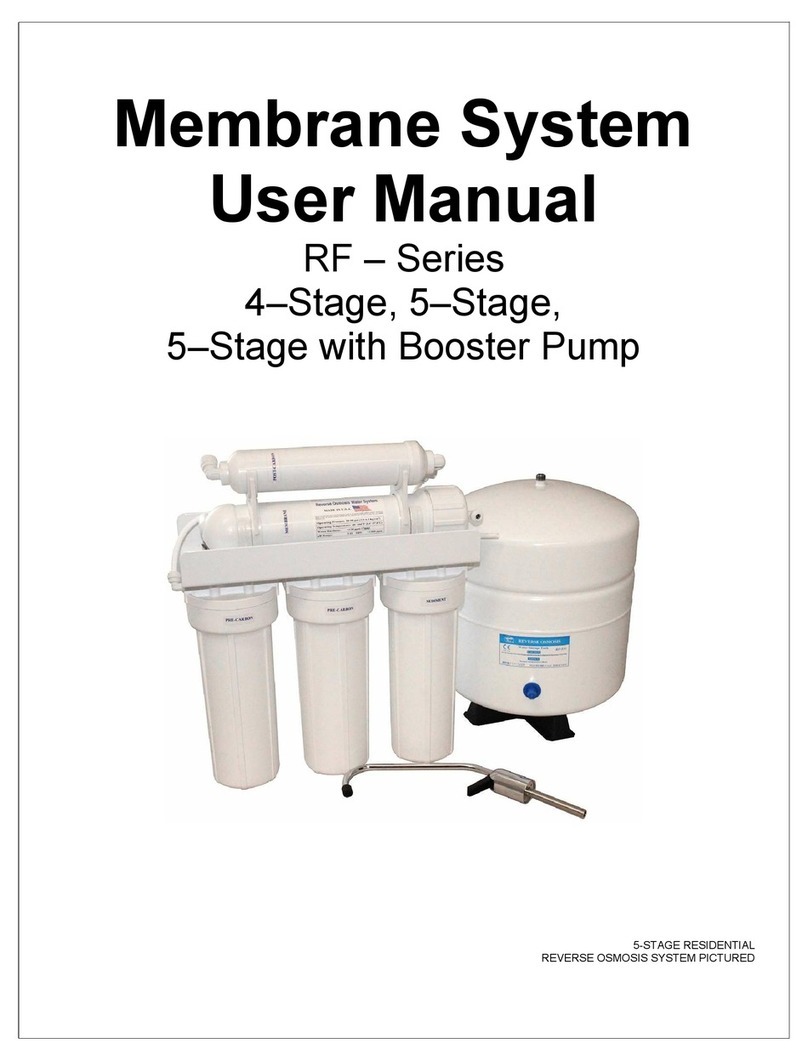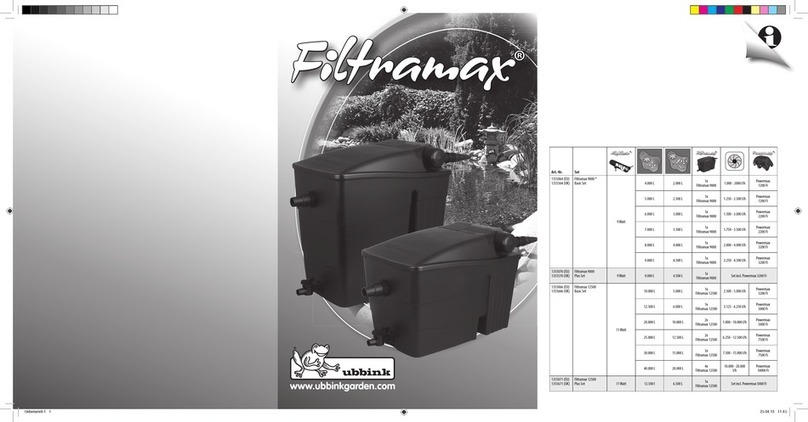
4
PLEASE NOTE THESE SPECIFICATIONS BEFORE PROCEEDING
OPERATING PRESSURE RANGE : 20 - 125 PSI
OPERATING TEMPERATURE RANGE : 33º F - 120º F
INLET / OUTLET PIPE SIZE : 3/4: FNPT
PLEASE COMPLY WITH ALL APPLICABLE PLUMBING CODES
PROTECT THE SOFTENER AND PIPING FROM FREEZING TEMPERATURES
Please read the entire Owner’s Manual and Instruction before installation.
This Owner’s Manual must stay with the unit.
-How A Water Softener Works-
Water hardness is derived from Calcium and Magnesium minerals that have been dissolved into the water under the
earth’s surface. These minerals are found in limestone deposits and are the source of hard water. The amount of hard-
ness in a given water supply is dependent upon the quantity of Calcium and Magnesium present and the length of time
water has been in contact with them. This can vary dramatically from well-to-well and, for this reason, a water analysis is
imperative in order to determine the proper treatment method. The degree of hardness increases as the concentration of
Calcium and Magnesium “ions” increase and is measured in Grains Per Gallon (gpg).
The problem of hard water in the home / business comes to light in many facets of daily use. Water spots and scum left
behind on bathtubs, fixtures and showers; wear and tear on appliances; calcium build-up in hot water heaters and piping;
and, greater amounts of soap and detergents being used are just a few examples.
The modern water softener is designed to reduce hardness ions and their unpleasant side effects. Special resin beads in
the softener mineral tank are used to change hard water into soft water. The surfaces of these beads are covered with so-
dium ions. As hard water enters the mineral tank and comes into contact with the resin, an exchange of ions takes place
as dissolved Calcium and Magnesium ions cling to the resin surface and sodium ions take their place, thus softening the
water. This process is called Ion Exchange. Over time, the sodium ions used for the exchange process become depleted
and must be replenished.
The water softener provides a Regeneration process whereby brine solution enters the mineral tank, driving-off the col-
lected hardness ions and replenishes the surface of the resin beads with more sodium ions. This process is automatically
initiated by the control valve on the mineral tank. The regeneration process has five basic cycles as follows:
1. Backwash - The control valve directs the water flow in a reverse direction through the mineral tank, separating the
resin beads and flushing any accumulated particles to a waste drain.
2. Brine & Rinse - In the first part of this cycle, the control valve directs brine solution downward through the mineral
tank, driving-off collected hardness ions and replenishing the resin beads with sodium ions. The second part of the
cycle rinses hardness ions and excess brine from the mineral tank to the waste drain.
3. Rapid Rinse - The control valve directs the water flow downward, settling and recompacting the resin bed.
4. Brine Refill - The control valve directs fresh water into the salt compartment to create new brine solution for the next
scheduled regeneration.
5. Service - This is the normal “operating” cycle where hard water enters the mineral tank, comes into contact with the
resin beads and exchanges hardness ions for sodium ions - the water then becomes “soft” and ready for use.
Softener Specifications

